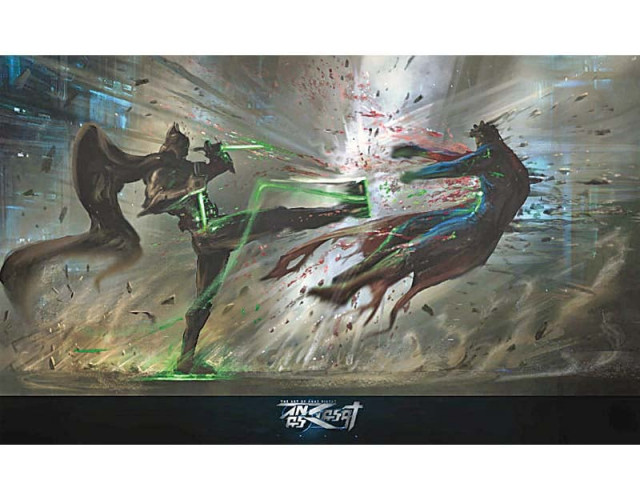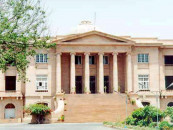Trouncing misconceptions with a vociferous imagination
Digital artist Anas Riasat proves art can be more than a hobby

Artist Anas Riasat, using software such as Adobe Photoshop and ZBrush, draws cartoon characters and fan art on elaborate backdrops in extensive detail. PHOTOS COURTESY: ANAS RIASAT
Young artist Anas Riasat employs his creative imagination using software, such as Adobe Photoshop and ZBrush, into concept art. His talent is spread over a wide spectrum, allowing him to deliver his skill into images of extensively detailed characters as well as elaborate environments.

One of his most interesting works is a tree character named Alderspray. It is a surrealistic illustration of a fantasy character, merged with a web of tree barks. The tree has a well-defined face with eyes and a nose. At the same time, the whole image is also a finely detailed panorama depicting streams of water amid greenery. What sets Riasat's work apart is his vociferous imagination that no viewer is able to ignore. For example, every individual leaf and grass blade is casting its own shadow; something not usually considered a necessary detail.
Regarding digital art, Riasat says the basic principles of drawing on a computer are the same as those of drawing on paper, canvas or other such medium. "You should know the principles of lighting, shading and colour theory that exist for traditional painting," he says. "[Painting on a computer] is analogous to painting without getting paint on your hands."
He also talks about the importance of drawing environments and their application, particularly in films. "[Before the advent of the digital medium], artists used to paint illusory environments on large canvases and matte surfaces, in front of which scenes were then enacted," he explains. "The illusion used to add depth to the set while it remained limited in reality. This was done to create fictional environments that can't be executed in reality due to limitations of time, location and expenses. Today, we can do this much easily through software."
Riasat, who is also the co-founder of Lucid Concepts, laments the non-existence of Pakistan's gaming industry. "There are so many artists who just upload their work to Facebook. They would have had a chance to demonstrate their creativity if such an industry existed."
As for our cartoon industry, he says every company wants to come up with a cartoon character of their own but the problem lies in the fact that the story is always associated with a brand. "It's unfair to children, who are the ultimate audience."
Childhood passion
"I was interested in knowing how animation works since childhood," says Riasat. "My father was at the King Fahd University, and I don't know why the chemical engineering university's library had a book on animation - which I found. I didn't quite understand it when I read it, so I asked my elder brother, who also used to draw, for help. He explained a few things to me, and that was when it started."

Born in Saudi Arabia, he came to Pakistan in 1993 at the age of 11. "The advantage of living in Saudi Arabia was that TV channels used to allot a good amount of time to cartoons, unlike in Pakistan at that time. Channel 3 sometimes used to show how cartoons were made and that sparked my interest." His second inspiration was video games. "While playing I used to imagine the characters in detail, despite the low quality of colour in computers of those times. That was what developed my ability to imagine."
Going against the family norm, Riasat chose animation over engineering. "Because they were unaware of digital art's application, my family sometimes said art should be a hobby since it cannot be a [lucrative] career." But he proved them wrong.
A colourful, thriving business
Riasat still remembers the day when he was in class five and Teenage Mutant Ninja Turtles was released. “Then onwards I used to start making their sketches during class before recess,” he says.
“Once a boy saw my sketch and asked me to give it to him against a few Riyals. I can’t tell you how many artworks I sold then. I used to get just one Riyal as pocket money every day, with which I could buy just a bar of Snickers or a Pepsi can. [To increase my funds], I used to sell outlined sketches for one Riyal each and the coloured ones for five Riyals. I made 40 Riyals during every recess.” However, one day Riasat’s mother learnt of his business and told his father about it. “That was the end of my business!” he laughs.
Published in The Express Tribune, August 15th, 2015.



















COMMENTS
Comments are moderated and generally will be posted if they are on-topic and not abusive.
For more information, please see our Comments FAQ